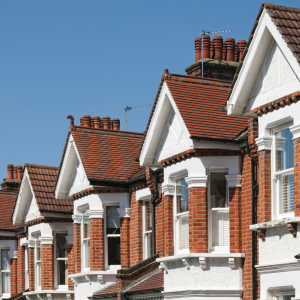
The annual growth rate fell to 0.9% from 1.2% in September, the lowest rate since February 2012, according to property website Rightmove.
Mortgage approvals for new buy to let purchases dropped by 14% in October compared to a year ago and by 53% from three years ago.
First-time buyers may have opportunity this autumn
The report found that the worst performing sector is properties with two bedrooms or fewer with a 0.1% monthly price fall, a result of less active buy-to-let investor activity, giving first-time buyers an opportunity this autumn.
The prices of properties with two bedrooms or fewer have kept pace with the rest of the market with a 32.8% price uplift in that timescale, partly driven by buy-to-let investors seeking better and less risky returns than are available from other asset classes.
These properties have also seen the largest year-on-year increase in average number of days to sell, up from 55 days to 58 days.
Miles Shipside, Rightmove director and housing market analyst, said that with the government using the tax system to try and help first-time buyers while deterring out-of-favour landlords, prices in this sector have been subdued as intended.
He added: “That gives aspiring first-time buyers an autumn opportunity to negotiate a favourable deal. The story at this time of year for the last five years has been an average autumn bounce of 1.6% in the price of property coming to market.
“Whilst all regions have seen a monthly rise, this year has a more subdued narrative with only a 1% uplift as the script has more sub-plots to affect the mood. While the backdrop of political uncertainty and stretched buyer affordability remains the same, this month has price drops at the bottom of the market dragging down the national average.”
Robert Lazarus, managing director of sales at Paramount Properties in North West London, said that before the additional stamp duty on second homes, around 20% of flats were sold to landlords driving prices up, whilst now it’s only around 5% giving first-time buyers the first pick of new stock that comes on.
Buy-to-let investors refrain from purchasing new properties
Head of buy-to-let sales at Octopus Property, Steve Matthews, suggested that entry level property prices are falling in some parts of the UK as investors refrain from purchasing new properties.
He added: “This reduced activity has been accounted for and we expect the buy-to-let market to remain robust, with £30bn of annual lending forecast over the next few years.
Jeremy Leaf, north London estate agent and a former RICS residential chairman, said that selling times through the rest of the country seem to be increasing, which could indicate that the weakness in the London market is starting to spread outwards.
He added: “On the other hand, selling times in London appear to be stabilising, following some fairly sharp falls in the sale of smaller one and two-bedroom properties in particular. Of course, these tend to be favoured by landlords and in the wake of tax and regulatory changes made to that sector, this has had an impact on sales.
“The problem is that first-time buyers are not taking the place of landlords in sufficient numbers, if we are to believe the findings from estate agent body NAEA last week, which showed the proportion of those buyers reaching a three-year low of only 20%.
“Looking forward, buyers and sellers seem worried about the two ‘Bs’ – not only about the impact of a good, bad or indifferent Brexit deal but also the looming budget at the end of the month.”















